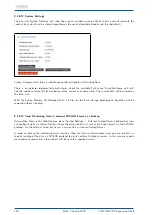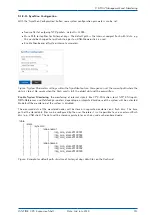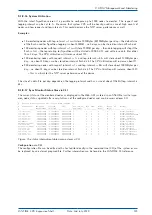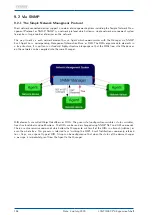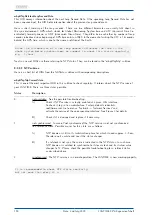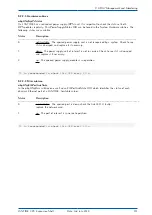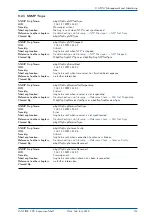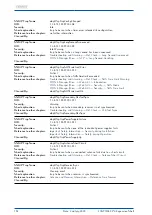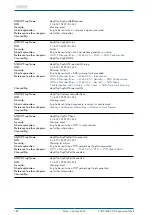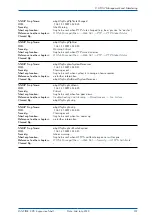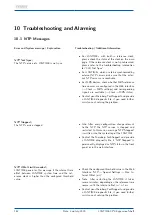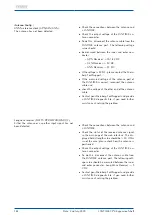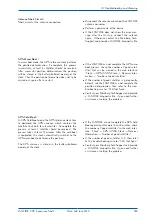
9.2.2.5 PTP subtree
If your LANTIME has IEEE 1588 PTPv2 functionality, the corresponding PTP OIDs can be found in the “mbgLt-
NgPtp” subtree. These are the most important OIDs to monitor:
mbgLtNgPtpPortState
The following PTP Port States are possible:
Status
Description
———————————————————————————————————————————————–
0:
uninitialized:
The port is booting up, the software daemon has not yet started, the
IP address is not yet assigned.
1:
initializing:
In this state the port initializes its data sets, hardware, and communication
facilities.
2:
faulty:
Not defined in a LANTIME.
3:
disabled:
PTP service has been disabled on this port, either by user configuration or because
the module is in a standby mode.
4:
listening:
The port is waiting for the announceReceiptTimeout to expire or to receive an
Announce message from a master.
5:
preMaster:
A short transitional state while the port is becoming a master.
6:
master:
The port is a current master.
7:
passive:
The port is in passive mode, meaning there is another master clock active in the
PTP domain. The port can enter master state when it wins the BMCA due to a failure/service
degradation of the current master.
8:
uncalibrated:
One or more master ports have been detected in the domain.
9:
slave:
The port has successfully subscribed to a master and receives all expected messages.
It also successfully measured the path delay using delay request messages.
It is recommended to monitor the PtpPortState OID every 3 s
152
Date: 2nd July 2020
LANTIME CPU Expansion Shelf
Summary of Contents for LCES
Page 2: ......



